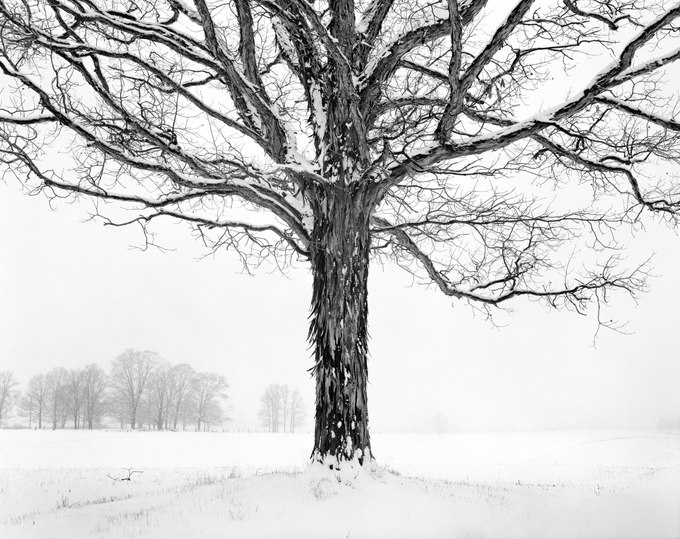Although tree species can be hard to identify, Shagbark Hickory trees are distinctive, especially their bark silhouetted against an open field on a snowy day. When mature, large, flat strips curl outward at the ends and naturally exfoliate from the trunks.
Native to the Midwest and common in the eastern U.S., these trees thrive in sunlight, moist soil, and humid climates—making them perfectly suited for Pennsylvania's upland snowbelt southeast of Lake Erie. They possess long taproots, making them difficult to transplant. Due to their long, slow growth—they can live for up to three hundred years—they do not cluster in groves but rather intermingle with oaks, pines, and maples. Many of the trees alive today, including this old specimen, predate the region's agricultural development.
Historically, their wood, bark, and nuts have been highly valued. Eighty percent of tool handles are crafted from their strong, hard, shock-resistant wood. The crevices in their trunks provide a daytime roost for sleeping bats, and the bark has been used as a food source. However, it is the tree's nuts that are truly exceptional. They have historically been a staple for native peoples, wildlife, and anyone willing to patiently crack open their tough shells. Although harvest sizes vary, entire regions yield an extraordinary abundance of nuts once every few years. The exact reason for this phenomenon remains a mystery, but speculation suggests some form of communication—whether through air, ground, chemical signaling, or available pollen—alerts other Shagbark Hickories across hundreds of miles to produce a similar bounty.

